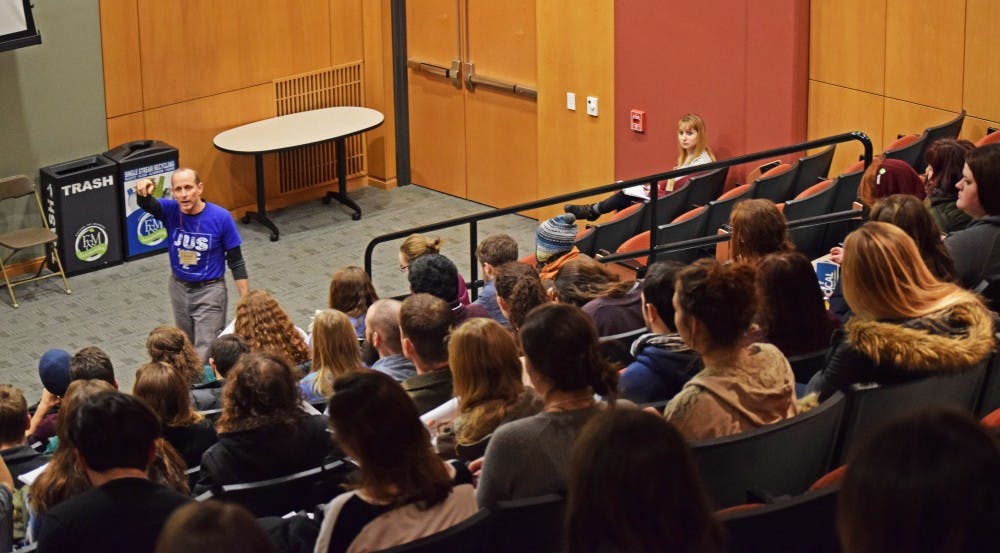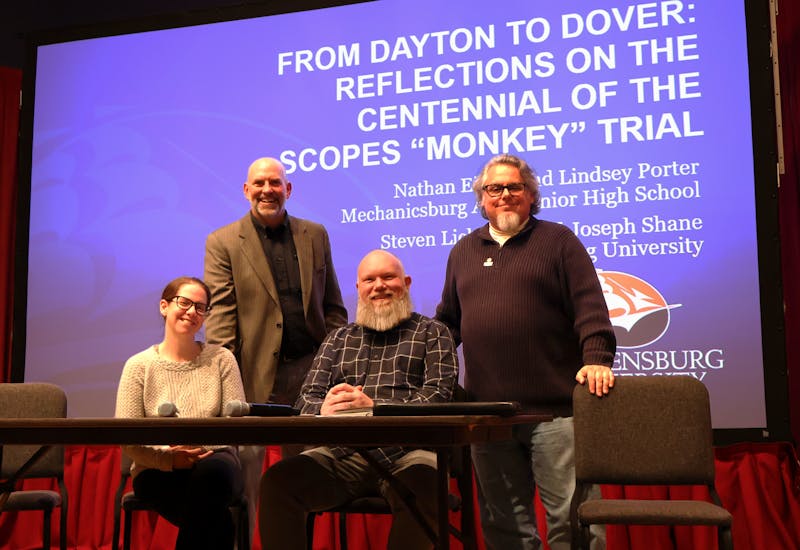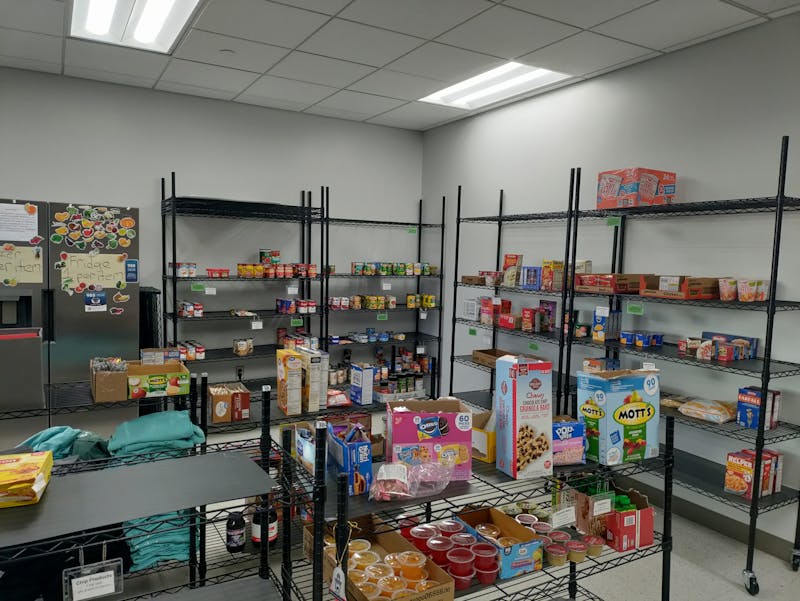Shippensburg University’s environmental club, Students for Environmental Action and Sustainability, attended the Green Allies Conference for the second year on Saturday at Franklin and Marshall College.
Green Allies is a group of schools, organizations and community groups that work together and strive for a more sustainable future. It hosts a conference every year to give environmentalists a chance to network and feel inspired so they can empower people at their own universities or communities to care about the environment.
Four high schools, 22 universities and almost 200 students were represented at the 2016 conference. Green Allies founder Ken Hamilton and environmental activist and presenter David Radcliff kicked off the event by introducing a panel on how students can improve their environmental club.
“We are not here for a protest, but to demonstrate solutions and make a difference in campuses and communities,” Hamilton said.
Alexa Gatti, a senior at Lafayette College, and Justinian Innit, an Indiana University alumna, encouraged students to actively promote environmental awareness on their campuses in easy and appealing ways. They offered suggestions such as distributing energy efficient light bulbs and sponsoring hiking or caving trips to show the environment they are protecting.
Following the discussion, attendees dispersed to connect in different workshops held throughout the day. They covered various topics, such as environmental careers and engaging sustainability in Lancaster, Pennsylvania.
Gatti and Innit continued their open discussion, inspiring students by talking about their past successes, which prompted new, original ideas from other students.
Gatti said at Lafayette College they will promote waste awareness by placing full, clear trash bags in the quad to demonstrate how much waste a college student generates in a year and they will collect e-waste, or old electronics, from students to bring to an e-waste recycling facility.
“Don’t be afraid to push for [what you want to do] because no change was ever made by people sitting on their couch and saying, please, once,” Innit said.
After brainstorming new plans for environmental clubs, representatives of Dickinson College, Franklin and Marshall College and the director of campus outreach of the Humane League taught participants how to transform these ideas into action.
They stressed the importance of students proposing ideas to administration with a strong plan and enthusiasm.
“Show us you spent time researching your idea … [sometimes] there’s no way we can say no to them because they’re so well done,” said Sarah Dawson, director of Franklin and Marshall’s Environmental Center. “Events have been rejected in the past, but instead of seeing it as failure, keep pushing and view it as a stepping stone to your goal.”
SU geography professor Claire Jantz attended the workshop on urban versus rural campuses.
“It talked about the university versus the community and the tension [between the two]. A lot of students want to be engaged with the community, but the community doesn’t always want to,” she said.
Jantz said the workshop addressed the different types of challenges across the spectrum of urban and rural campuses, such as community interaction, population and availability of resources.
“Temple [University] has a bike sharing program, but that would be hard to do at Ship because we don’t have the same number of people and we have many commuters traveling farther distances. Temple has 40,000 students and it’s hard to do that at a small campus in the middle of nowhere,” Jantz said.
Radcliff, the conference’s keynote speaker, ended the day by addressing all the attendees. He held a presentation on environmental degradation, showing photos of the rainforest 40 years ago and today. He explained no other biome could compare to the benefits of the rainforest because of its rich biodiversity and medicinal plants.
“We have to explain things in a way that connects the dots for people,” Radcliff said, adding that people must be wise, compassionate and sensitive.
Displaying pictures of clear cutting and women carrying wood, Radcliff explained how women in Myanmar regularly walk six miles to collect wood so they can cook for their families.
“It’s hard to deal with environmental issues when people are having economic issues,” he said.
While in the Amazon, Radcliff showed pictures he took of 11-foot anacondas, pink dolphins, flying monkeys and medicinal plants followed by toxic waste ponds polluted with petroleum. He said that the residents now have to collect rainwater to drink and they are contracting diseases they never had before.
“These people and this place need our help… and it starts here with us,” Radcliff said. “Somebody has to start a different path, and who not but the likes of me and you?”
Tara Kennedy, vice president of SU’s environmental club, said the conference made her feel hopeful.
“It’s good to know there’s so many people my age that care,” she said.
She plans to reach out to other clubs on campus to increase sustainability awareness and create relationships with them.





The Slate welcomes thoughtful discussion on all of our stories, but please keep comments civil and on-topic. Read our full guidelines here.